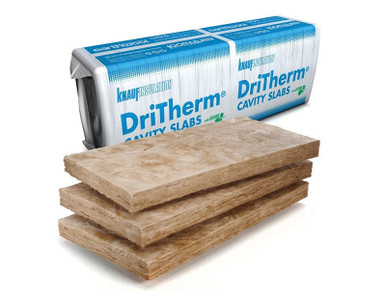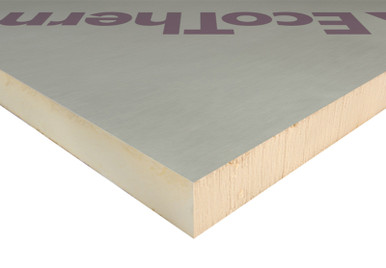Introduction
Wall insulation is one of the most cost-effective home upgrades you can do, with many people overlooking the additional savings and benefits that having full wall insulation can give. However, homes frequently neglect the importance of proper insulation. The cost of insulating your home's walls is entirely dependent on the size of your property, the type of walls you have (cavity or solid), and their current state.
If you live in a brick house built after 1930, there's a good possibility you have cavity walls that aren't very good at insulating. External wall insulation and internal wall insulation are two options for such homes or properties. Cavity wall insulation, on the other hand, is required for homes with external wall insulation that consists of two smaller walls separated by a gap. Installing this form of insulation is quick and simple. They lower your energy expenses and lessen your carbon footprint by reducing the percentage of heat loss from your home. But, how does it work? Is your home suitable for the installation of such insulation? The answer is as follows:
What is the process of cavity wall insulation?
Air is a natural insulator, which means that heat does not easily transfer through it. Wearing multiple layers of clothing is the greatest approach to keep your body warm while it's cold outside. This is due to the fact that the layers trap the air between them and keep it inside. Insulation for cavity walls works in a similar way. The air-matrix is created by trapping air between the fibers of the wool-like material utilized. As a result, this sort of insulation is far more effective than vacant cavity walls at retaining heat.
How can I tell if my walls have cavities?
If you certainly do not remember the age of your house, another way to know is by seeing the brick structure of your outside walls. In a typical cavity wall, all the bricks will look the same, with the long side of the brick visible on the outside. And in solid walls, the bricks will be in an alternating long-short pattern.
What if the brickwork doesn't get visible for some reason? In such a case, take a close look at the thickness of your exterior walls. This gets done by looking at a window or a doorway. If the thickness is more than approx. 260mm, there are the chances of having cavity walls.
Cavity wall insulation is undoubtedly one of the most cost-effective ways to reduce your energy bills, and it's a wise investment that could provide you the best return on your investment. As a result, the sooner you install, the sooner you will begin to save money.
Why Should I Utilize Cavity Wall Insulation In My Self-Build Project?
When it was originally introduced, the installation of insulation in homes had a profound impact on everyone's lives. The reason for this was that high-quality, efficient, and accessible insulation meant that people could now live comfortably in their homes, whether it was in the middle of a scorching summer or during the freezing, harsh winter months.
It meant that there was no need to wear layers upon layers of clothing just to be warm indoors, and it meant that there was no need to be concerned about becoming ill as a result of the bad weather.
More and more individuals are beginning to invest in some truly wonderful insulation supplies for their houses, and many governments are pushing the public to do so by offering discounts that make the process more inexpensive.
Despite these discounts that make insulating your home more affordable, many individuals are still hesitant to spend thousands of dollars on something that they do not believe to be highly urgent or required.
After all, it's not just the expense of insulating materials that you'll have to pay; you'll also have to pay a significant number to employ a professional to handle the entire procedure for you.
That's when a self-build project comes in handy. A self-build project is absolutely something to consider if you want to save some money while also getting some first-hand experience installing insulation in your home.
To begin planning the insulation, consider insulating the walls, which are one of the most common sources of heat loss from a home if they are not adequately insulated. It's also a little trickier than insulating windows, doors, and other surfaces, which is why it's better to get it done first.
When you're trying to insulate your home's walls as part of a self-build project, the first thing you should think about is the type of insulation you want to use.
You can insulate walls from the inside out, from the outside in, or from the inside out using cavity wall insulation.
As long as your wall type and money allow it, the latter is without a doubt the finest option.
The first step is to check that your house's wall is a cavity wall. This sort of wall has an inner leaf and an outer leaf, as well as a space in the middle that may be used to conveniently add insulating material and successfully maintain your home pleasant. To ensure that you may acquire cavity wall insulation, you must ensure that the walls are not solid walls and that there is no space between them. It's just one solid wall, as the name implies.
If your property is built with solid walls, cavity wall insulation cannot be added later unless the wall is demolished and rebuilt, which is not a cost-effective or convenient operation for anyone.
Now for the facts that everyone wants to know: why is cavity insulation preferable to external or internal insulation?
There are a variety of reasons why cavity wall insulation is the most popular choice among self-builders.
First and foremost, cavity wall insulation typically comes with a 20-25 year warranty. Internal and external insulation do not have the same warranty, which is a decision issue for many consumers assessing their insulation options.
The second advantage of cavity wall insulation is that it insulates the house significantly more effectively than either internal or external insulation. When it comes to external and interior insulation, those who receive cavity insulation perceive a substantial difference in their home's temperature, whereas the difference is more modest.
Another reason cavity wall insulation is regarded to be better is that, because to the current grant regime, it is almost free in many parts of the country. As a result, it is less expensive than adding external or internal insulation. In addition to the initial cost, it often requires less maintenance and is less frequent than other types of insulation that require periodic adjustments. All of these improvements add up to a significant financial outlay, which is not the case with cavity insulation.
One of the reasons why many people prefer cavity wall insulation over other types of insulation is that it gives additional benefits such as soundproofing, fire resistance, moisture resistance, and a variety of other desirable properties. This, however, is dependent on the type of insulation material used to insulate the wall.
External insulation has the disadvantage that extreme weather conditions can wear away at the material, making it less effective at its task. This is not a problem with cavity wall insulation because the material is usually adequately shielded from the elements, such as rain or snow. This implies that the insulation will last far longer than exterior or internal insulation, providing you with greater value for your money.
Last but not least, cavity wall insulation saves significantly more energy per year than other types of insulation, making it the greatest option for self-builders. Not only will you save money on your energy costs, but you will also be helping the environment and conserving resources. This is frequently a reason why people who care about the environment select cavity wall insulation.
Without further ado, start arranging your wall insulation to create a lovely, comfortable home.







